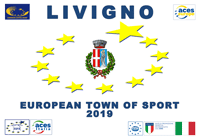With winter coming many bird species descend to lower altitudes or migrate to warmer areas where they can more easily find food. The respiratory rate and the heartbeat of several mammals, such as bears and bat, are greatly reduced entering a state of "light sleep” called hibernation. Species like hazel dormouse, hedgehogs, dormice and marmots hole really up. And then some
animals live outside in the mountains. In the course of evolution, their vital and structural body functions have changed (thicker fur and often slower digestion of few nutritious food) and they also have developed particular behaviors to protect themselves from the cold. A lot of ingenuity is required to get ready for the winter (almost 6 months) and defeat the cold temperatures especially at higher altitudes.
The fur of mammals becomes more thick, as well as the subcutaneous fat layer, which will be used as protection from the cold and as energy reserve.
The birds fluff up their feathers to trap the air and to be more insulated against cold ( Tetraonidae: ptarmigan, black grouse and hazel grouse). Even on the nostril grown threadlike feathers that heat the air during breathing; Paws are covered with a thick duvet and by the fingers there are a kind of “combs” that allow to float on the snow and to dig in the fresh snow. In fact, for example, the black grouse and the ptarmigan exploit the insulating power of snow digging tunnel in the snow and minimizing the heat loss.
The fur or plumage molt is among all the “clearest” adaptation (reduces the risk of predation), usually it change from the color brown during the summer into white in winter (white hare, ermine and ptarmigan). The fur coloration of the chamois becomes instead darker in order to increase the absorption of solar radiation.
In short, during the winter the mountain animals: sleep a lot, lay in stocks and move just to find food.
Mountain animals and the humansSports and leisure activities increased a lot during the recent years: cross country skiing and downhill, snowshoes, off-piste skiing, climbing on ice, etc.
The mountain animal adapt not easily to these irregular activities: for example they can get used to a ski slope, avoiding that area, but back to front the freeriders keep looking for a pristine areas, where wild animals are maybe taking refuge.
Animals to avoidThe most sensitive species to this kind of disorder are the mountain Galliformes (ptarmigan, black grouse and hazel grouse and the rock partridge), which also have to protect themselves from predators. Even the ungulates (roe deer, deer and chamois) and the white hare feel the effect of this disorders.
Feel the powder...The areas with the greatest presence of mountain animals (the most important and delicate areas) are everywhere reported in Europe and there are rules that must be followed to protect the animals and to practice sport activities.
…respect your playground- -Respect the areas of safeguard measures imposed
- -Keep the dogs on a leash
- -Avoid the activities during the twilight and night hours
- -In Case of animal sighting keep your distanceand avoid loud noises and sudden movements

Ptarmigan with winter plumage (photo by Ettore Mozzetti)

Rock partridge in the snow (photo by Ettore Mozzetti)

Ptarmigan (photo by Radames Bionda)

Black grouse (photo by Giovanni Pelucchi)

Rock goats (photo by Enos Bernardara)

Female chamois and its young
(photo by Gianfranco Scieghi)

 -/-°C
-/-°C 19/31
19/31 WEBCAM
WEBCAM














